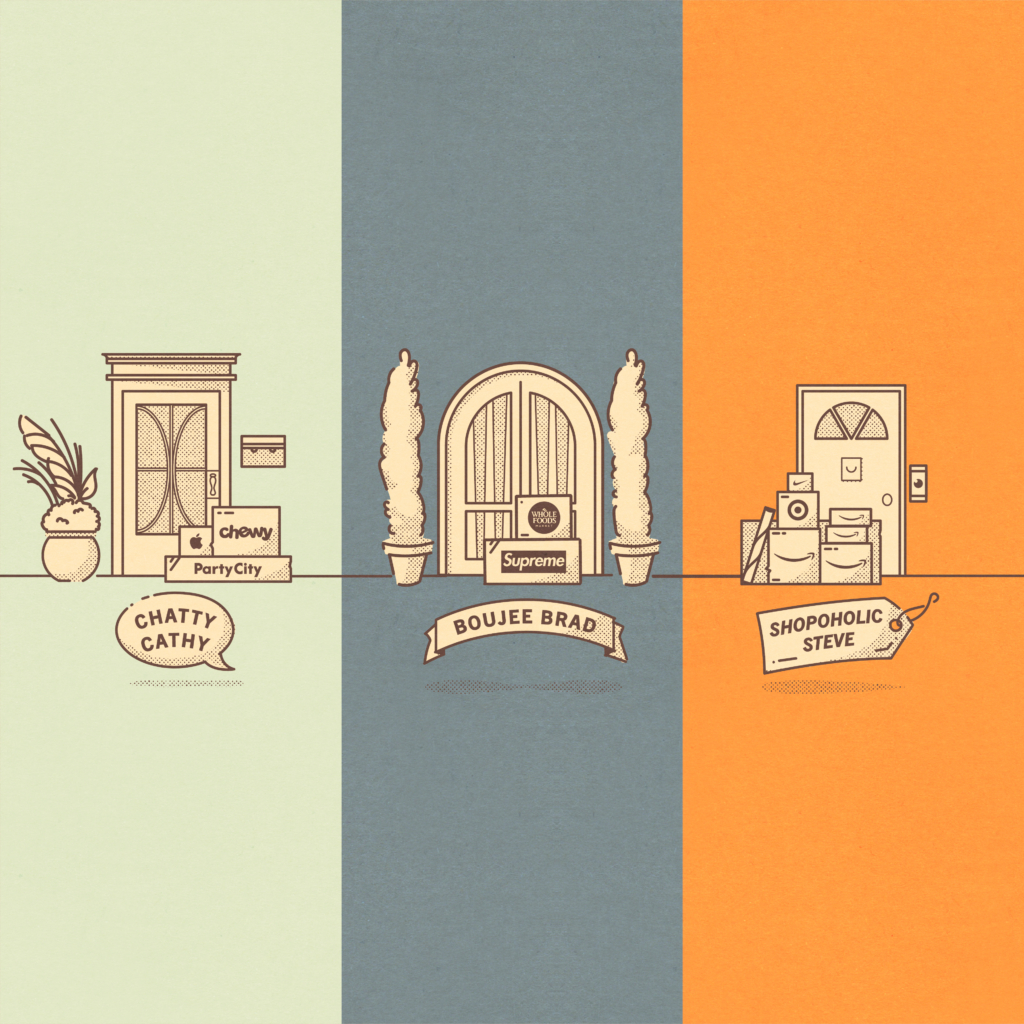
I used to think personas were a waste of time. A couple of slides to show you’d “done the work,” but not a truly useful tool.
Personas, if you’re not familiar with them, are supposed to give marketing and sales teams valuable insight into who their customers are, what they want, and how to reach them.
It sounds like a great idea. But in practice, personas tend to be filled with downright useless information—like the Netflix show “Shopaholic Steve” watches in his free time. They’re also full of stats around age, marital status, education, and location.
Okay, some of that might be helpful for targeted advertising. But if you’re trying to lay the foundations for a brand that appeals to a particular sort of person on an emotional level, demographics and trivial facts will only get you so far.
Another issue with typical personas is that they tend to be built in this order:
- Divide your buyers into three or four groups based on some obvious difference—like job title, income, or age.
- Fill out each persona with the information you and your team thinks feels right.
I’ll be the first to admit that I’ve followed this formula too. As you’d probably expect, I can’t recall one time when those personas made a real difference for a brand.
Building personas that build stronger brands
Before reading Adele Revella’s book, Buyer Personas, I thought these flaws were inherent to personas. I’d never seen them done any other way. But Adele’s approach digs deeper.
For starters, she doesn’t divide buyers into groups based on her own assumptions. She begins by talking to real customers and prospects.
Personas based on actual people. Makes sense, right?
Here’s a quick outline of Adele’s process:
- Ask people probing questions about their buying process.
- Plot out their answers and look for patterns.
- Segment buyers into personas based on shared needs and expectations.
That last part is key. Personas take shape around their wants and impulses, not their demographic info.
We’ve adopted this practice at Infantree to inform brand strategy, and it checks out. While we’ve made a few adaptations, we stick fairly close to Adele’s process. We start by talking to at least 10 customers or prospects. We go into those interviews with pointed questions about specific stages in the buying process. We create personas based on the needs and expectations revealed in our interviews. And we use verbatim quotes to back it all up.
Personas in practice
Let’s break down an actual persona we recently created for a client. The client—we’ll call them ABC Builders—is a general contractor. “Michael” doesn’t represent a single customer; he’s a mashup of four (real) individuals who shared similar buying journeys.
We break personas into five sections. The first examines what’s going through the buyer’s head before they deliberately begin looking for a solution. In this case, we looked at what triggered Mike to think about hiring a general contractor, as well as his first instincts and considerations.
The second defines “success” for a buyer like Mike. As he begins searching for a general contractor, what characteristics or services does he hope to find?
Our third section looks at the “friction” Mike experienced in his decision-making process. What were his doubts and concerns? Were there ways ABC fell short of other contractors?
Next, we assess Mike’s decision-making criteria. Adele describes decision criteria as “the specific attributes of your product, service, or solution that buyers evaluate as they compare alternative approaches.”
She goes on to say that buyers don’t just want to understand benefits, they need to know the facts that back them up. Companies who communicate this are more likely to earn trust: “Decision Criteria insights frequently surprise marketers by revealing that buyers are not satisfied with benefits-oriented marketing materials.”
Mike’s decision criteria are a perfect example of what Adele means. They were specific and factual. They surprised the client, and they were essential in guiding ABC’s new messaging.
The final category we look at is “other influences.” This includes the people, situations, and brand assets that either contributed to the buying journey or didn’t contribute how we might expect.
Together, these five slides give us a clear, substantive insight into how ABC Builders can appeal to customers who share the same wants and needs. First, and most importantly, they help us clarify the main proposition for the brand—the strategy that defines everything to follow. By knowing who exactly we’re talking to, we’re able to position the brand in a distinctly appealing way.
Then, as we create different assets for the client, they become a resource for our writers, designers, and web developers. And of course, for ABC’s own sales team.
Are personas a good investment for your brand?
As much as our team values personas, they don’t make sense for every business. Personas work best when the buying journey takes time, research, and deliberation. Marketers call these high consideration purchases. Classic examples include jewelry, baby strollers, sports equipment, designer goods, vehicles, and household appliances.
With high consideration purchases, we can ask buyers to tell us what their search was like. And more often than not, buyers will be happy to share what they found confusing, frustrating, interesting, or exciting along the way.
Creating detailed personas for a candy bar would be much harder. Because usually, the candy-buying “journey” lasts for about five seconds at the gas station counter. The decision is more reactive and carries less risk than, say, planning a home remodel. It’s a low consideration purchase. So if you’re selling low-consideration goods or services, there are probably better ways to spend your marketing budget.
But if you suspect that people spend a significant amount of time and effort deciding between your product and your competitors’ products, a few carefully researched personas can transform your understanding of what customers want. Which is why they’ve become one of our favorite tools for helping clients answer that daunting question underlying all branding: Why should anyone care?